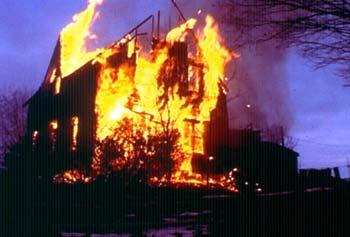The Paradise Institute
dal 23/9/2002 al 17/11/2002
Segnalato da
23/9/2002
The Paradise Institute
The Power Plant, Toronto
It is sometimes not easy to recognize where the border between reality and fiction lies. The artists Janet Cardiff and George Bures Miller don't make it any easier for us in this regard-quite the contrary. By combining moving images, sound and space in an unconventional manner, their works convey complex and contradictory information that disturbs our perception and subsequently calls into question our understanding of the world.

It is sometimes not easy to recognize where the border between reality and fiction lies. The artists Janet Cardiff and George Bures Miller don't
make it any easier for us in this regard-quite the contrary. By combining moving images, sound and space in an unconventional manner, their
works convey complex and contradictory information that disturbs our perception and subsequently calls into question our understanding of the
world.
In Janet Cardiff's audio tours for example, or, the so-called "walks," the participant moves physically through a narrative. Sounds and fragments
of stories are recorded in the studio or on-site in a binaural way that mimics our sense of surround-sound when played back via the headphones.
The outside sounds of the site penetrate through the headphones and mingle with the recorded narrative so that it is no longer possible to
distinguish which sounds belong to which reality. One has only the impression of seeing, hearing and experiencing things as they do not really
exist. Can we rely on our senses at all? What is real and what only takes place in our heads?
Janet Cardiff and George Bures Miller, who have been working collaboratively and individually for many years, present a work from 2001 entitled
The Paradise Institute, originally produced for the Canadian Pavilion at the 2001 Venice Biennale. It is a hybrid of installation, video projection,
audio, sculpture and performance. A plain wooden construction-a movie house for seventeen people-is located within The Power Plant's J.S.
McLean Gallery. Visitors are invited to don headphones and take a seat in the cinema balcony from where they have an elevated view of the
miniature theatre space. An original thirteen-minute video presents several iconic scenes including a bird's-eye view of a truck driving through the
landscape, a shot is heard, a man falls to the ground; and a cabaret artist performs a Marlene Dietrich song. These and other scenes are
perhaps the fragmented story of the dreams, illusions and memories of a main character, who throughout the film does not get out of bed.
Comparable to a cubist collage, numerous strands of narrative both visual and acoustic, are woven together in myriad ways, running parallel or
disassociated in time, complementing or questioning each other. We hear a person nearby munching popcorn, a murmuring voice from behind
and then we are drawn back to the film's soundtrack and to German songs from the 1940s. Both what we see and hear refers to a real
place-the cinema-that is actually the fiction of a cinema (just like the cinema is a place of fictions). Simultaneously, places are created in the
viewer's imagination based on memory and experience that are not fictional at all. Or are they? Realities turn out to be fictive, and the fictive has
a lot to say about realities. Just as the title of the work is a paradox for ways of perceiving the world, romantic associations with the word
"paradise" are juxtaposed with the rational of the word "institute;" the work itself is full of ambiguities and disturbances that take us on an
uncertain but spellbinding journey.
Wayne Baerwaldt
Image:
Janet Cardiff and George Bures Miller
Still from the Paradise Institute, 2001
Audio, video, mixed media installation
Dimensions variable.
Courtesy of Plug In- ICA, Winnipeg
The Power Plant
231 Queens Quay West
Toronto, Ontario,
Canada M5J 2G8
Phone: (416) 973-4949



